Background:
During the tuning of the Mabotech M520 turbocharger, a point was reached where the turbocharger wastegate duty cycle began to increase, indicating that the power supplied by the turbine was nearing a maximum for the hardware configuration.
The exhaust configuration was changed from a catted downpipe to a catless downpipe to facilitate more power generation by the turbine.
The effects on engine and vehicle performace from swapping the downpipes will be discussed in this post.
Side Road:

Flow testing with downpipes has shown that the difference between vendor-specific models with an aftermarket catalytic converter and a no-catalytic converter is around 35%, with the catless downpipes having higher airflow at the same test depression.

The power developed by the turbocharger turbine is related to the expansion ratio across the turbine wheel. The expansion ratio, er, is the pressure at the inlet to the turbine relative to the pressure at the outlet.
The equation below describes the power output and shows that the increase in the expansion ratio increases the value of the multiplier found in brackets.
P = n*m*C*T[1-(1/er)^{(k-1)/k)}]Where:
- P – power
- n – efficiency
- m – mass flow rate
- C- specific heat at constant pressure
- T -air temperature
- er – expansion ratio
- k – specific heat ratio
As the value in brackets increases, so does the power output from the turbine.
Reducing backpressure in the exhaust system after the turbine wheel can increase the expansion ratio. Therefore, removing the catalytic converter, as with a catless downpipe, will result in greater potential power output from the turbine, holding other factors constant.
With the turbine able to generate more power at a specific operating boost pressure, the operating boost pressure can be raised to take advantage of the extra available power.
Downpipe Swap:
The GTI had been operating with a Baun Performance 4″ GESi cat downpipe, 3.5″ Baun Performance midpipe, and 3″ Baun Performance exhaust.

I swapped over to a Trackslag 3″ catless downpipe, Baun Performance 3″ midpipe, and exhaust.
Same Tune Comparison:
Without making any changes to the ECU tune, I logged the car to see what effect there might be. Readings were taken during a full-throttle fourth gear pull, starting around 2,500 RPM and ending around 6,500 RPM.
The outside air temperature (OAT) was very similar between the catted (R7) and catless (R7-TS) sessions.

Intake air temperature (IAT) was also similar.
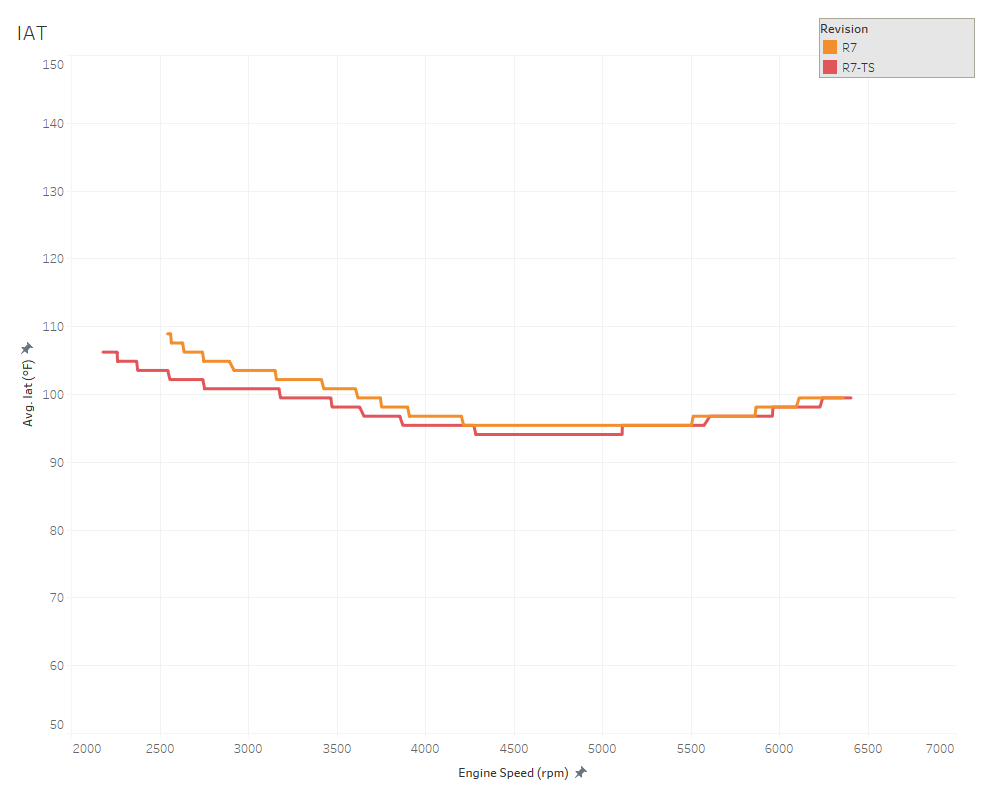
The boost pressure was similar whether the downpipe had the catalytic converter or not.
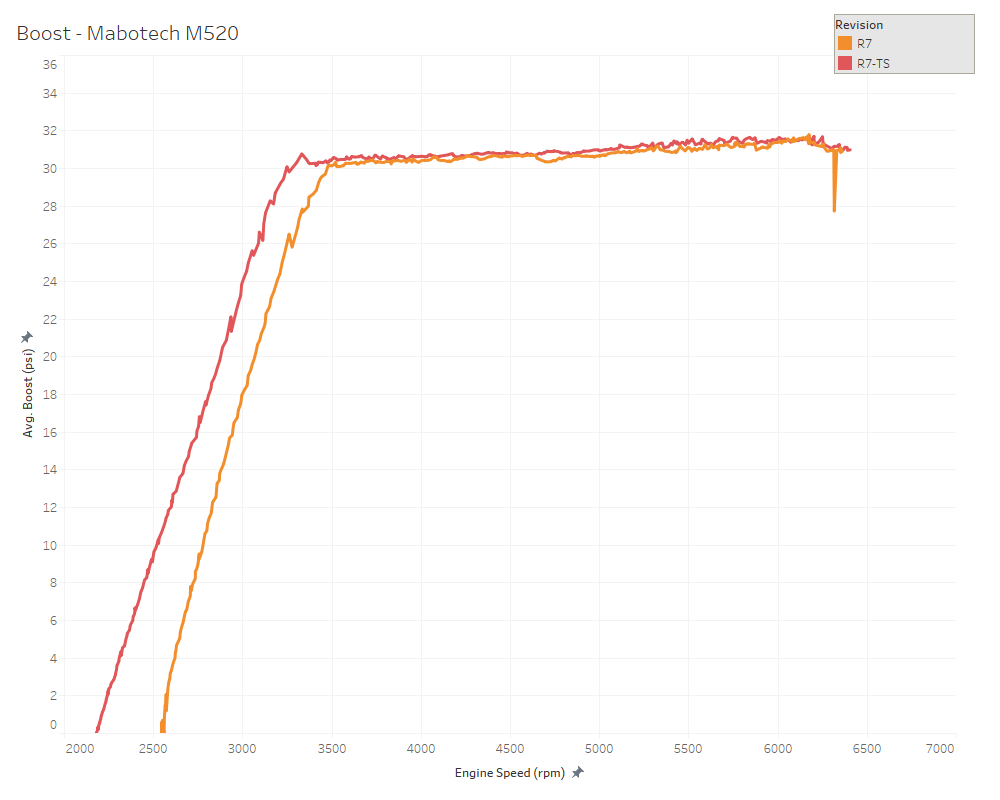
The only significant difference was in the turbocharger wastegate duty cycle. As expected, with the higher-flowing catless downpipe, the turbocharger wastegate duty, an indication of how hard the turbocharger is working, was lower by approximately 10%.
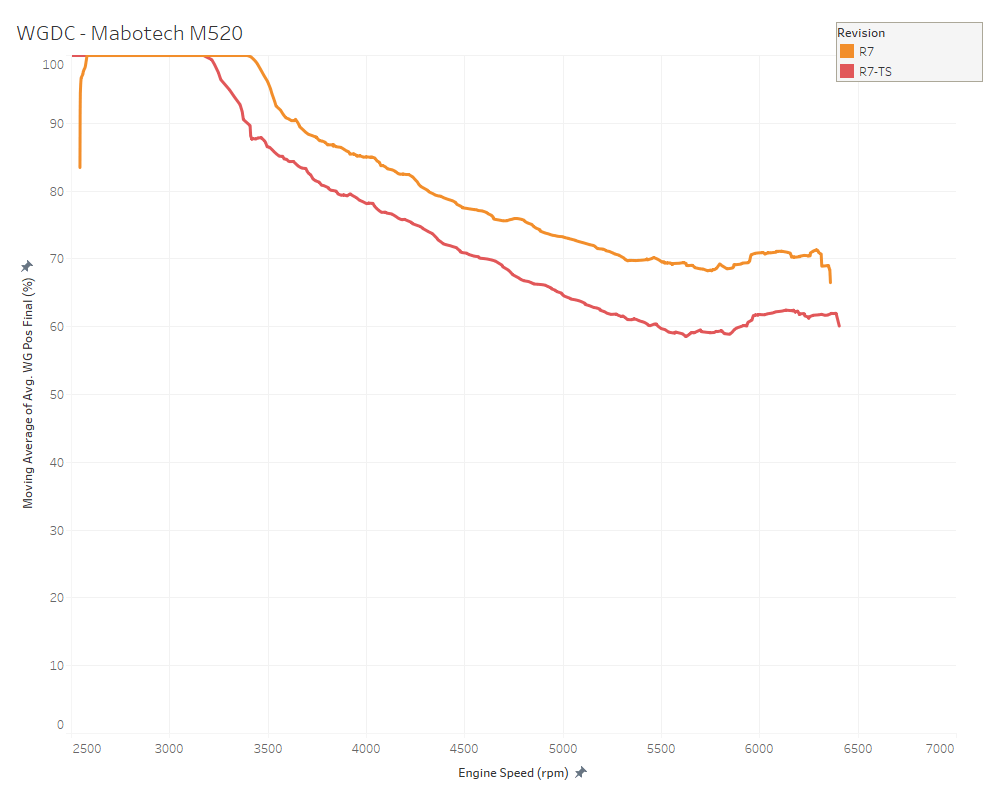
With the catless downpipe, the rate of boost pressure build-up was increased, or put another way, the time for boost pressure to build by an equivalent amount was decreased, as shown in the chart below:
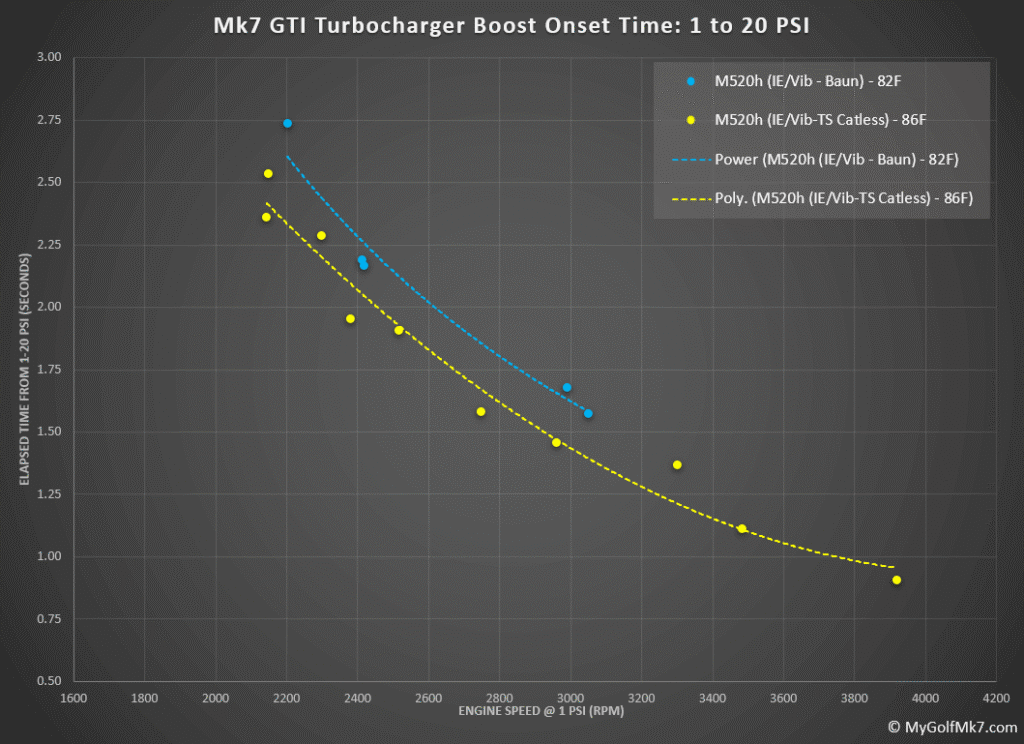
Finally, a single data point comparison of Virtual Dyno estimated peak whp shows there is a possible increase of peak whp.

Note: A single-pair comparison is insufficient data to evaluate the power output comparison with confidence.
Revised Tune Comparison:
With the GTI engine software operating to reach a target load value, increasing the potential power output from the turbocharger turbine will not immediately result in a significant increase in engine power output. Revising the tune is needed to take advantage of the increased turbocharger capacity.
As the boost pressure increased, so did the potential for engine knock. A requirement I had for the ECU tune was to operate with the OEM knock thresholds. Therefore, I increased the fraction of Ethanol in the fuel from 30% to 50% to provide more protection from a potential knock event.
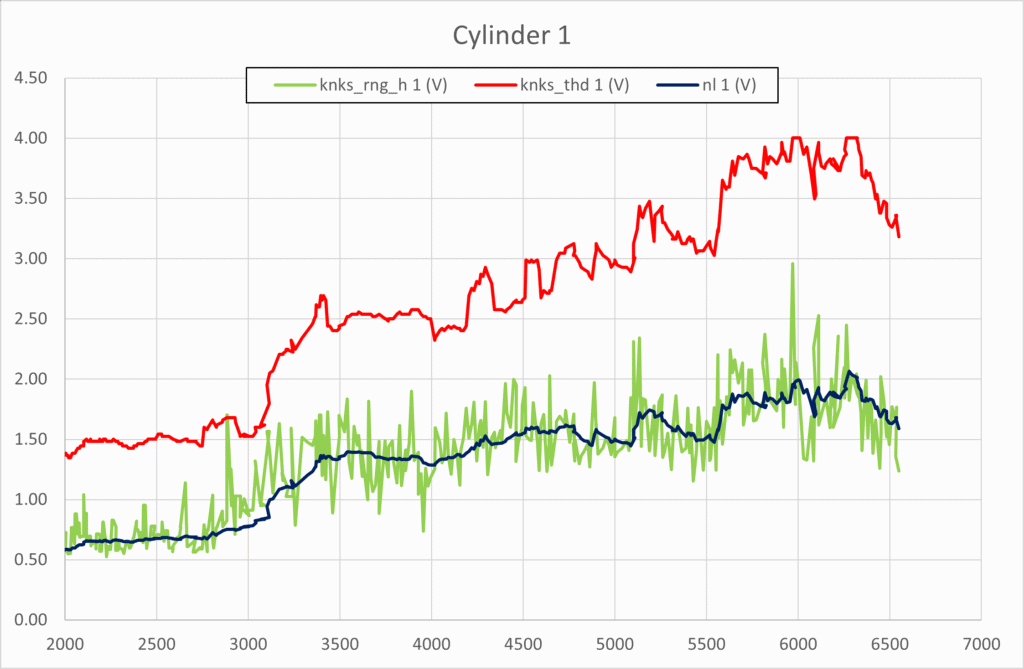
This increase in the Ethanol percentage also allows for an increase in the ignition timing advance, which will likely produce a power increase.
Any power increase is a combination of increased boost pressure and increased ignition timing.
After the tune is updated another data collection session is made.
The outside air temperature is very similar (R11-85F) to the previous sessions.
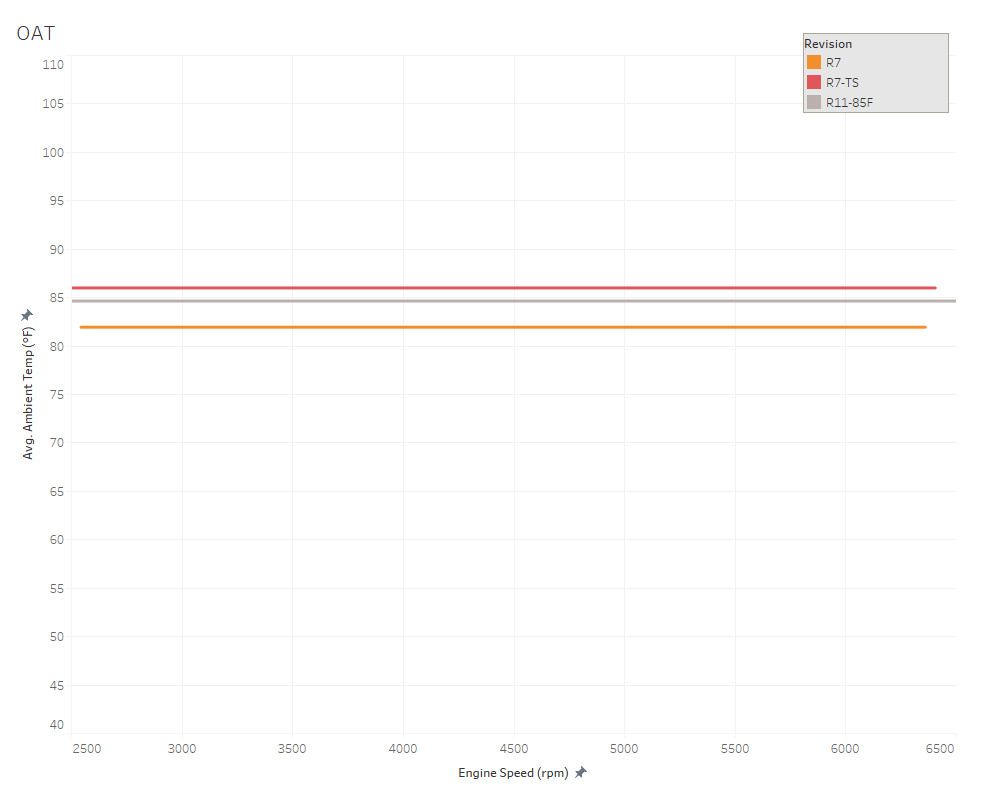
The intake air temperature is also similar.
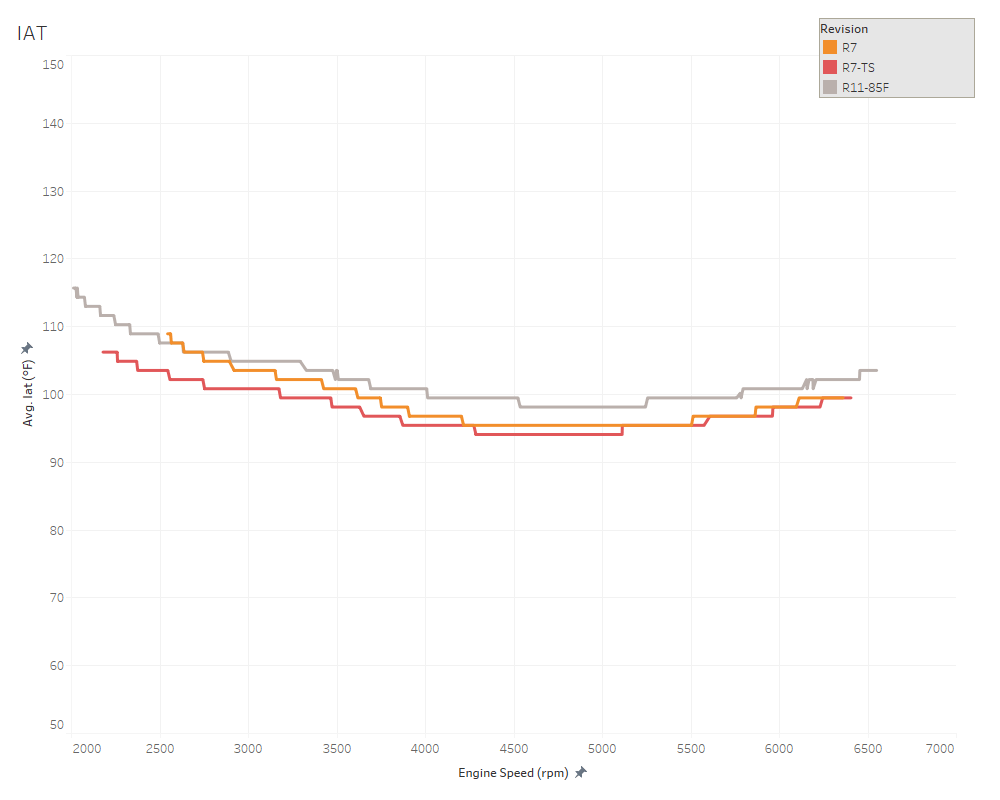
The added headroom for increasing boost pressure is evident from the boost pressure comparison.
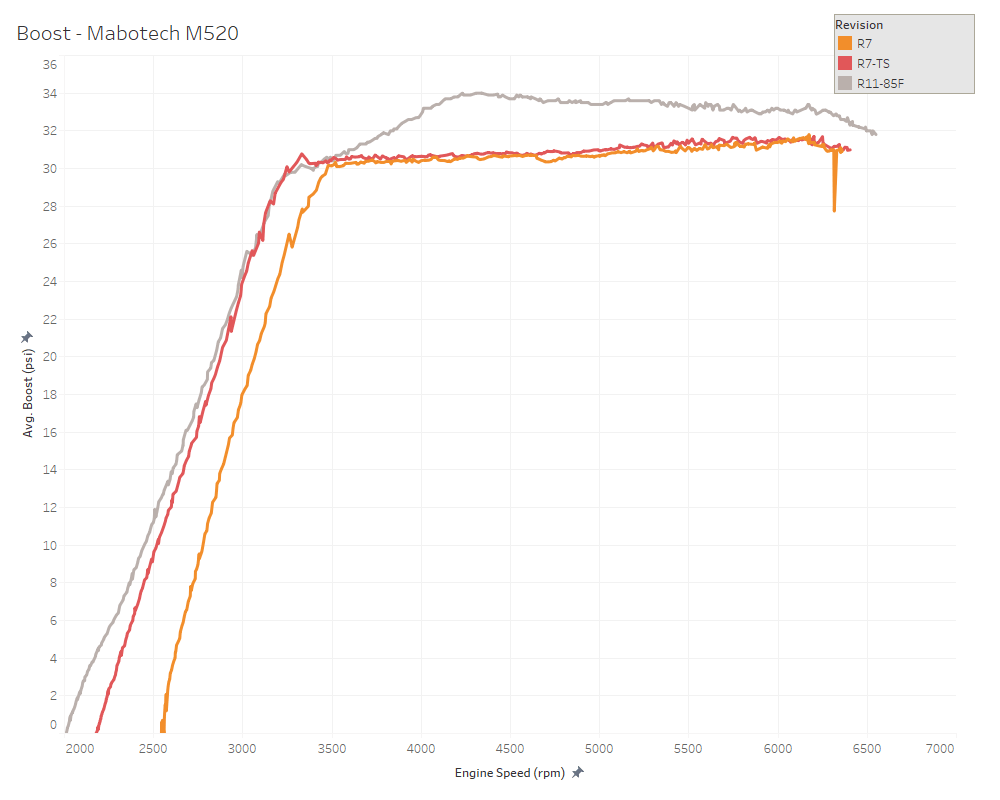
Interestingly, even with the boost pressure raised by 2-3 psi, the turbocharger wastegate duty cycle (WGDC) has not increased to the level it was when using the catted downpipe. This suggests the boost pressure could have been raised further.
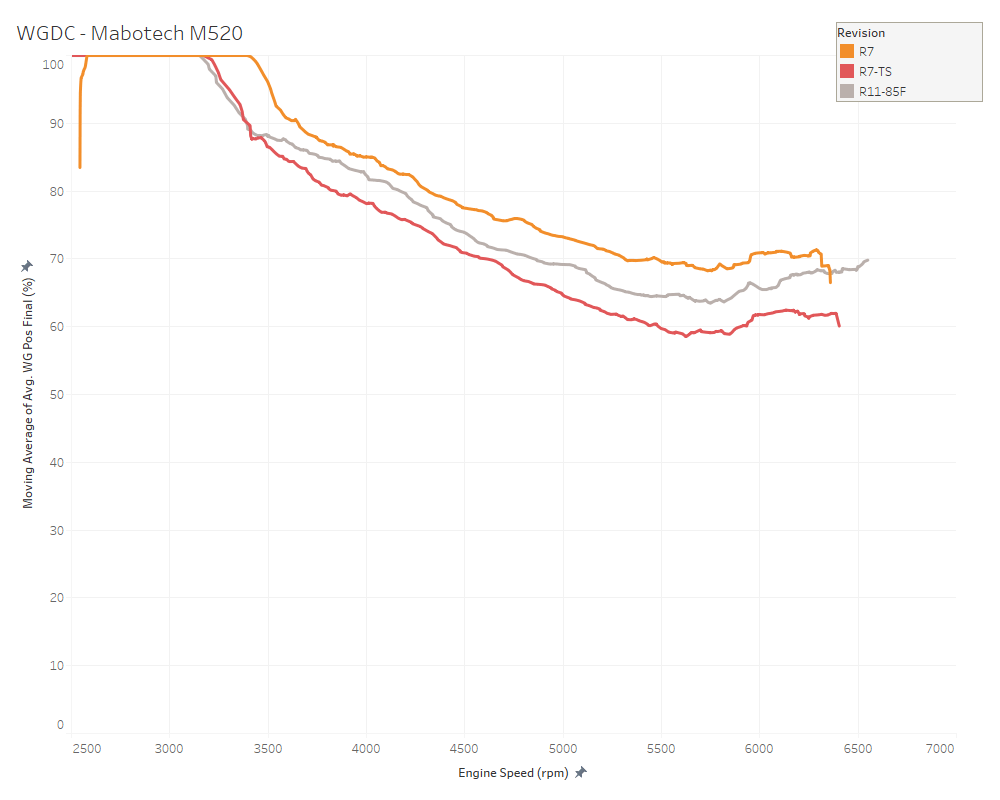
Note: There are other considerations beyond just the boost pressure. Ignition timing and incidence of knock can factor into deciding on suitable boost pressure.
The estimated peak wheel horsepower increased by approximately 45 whp compared with the catted downpipe configuration.
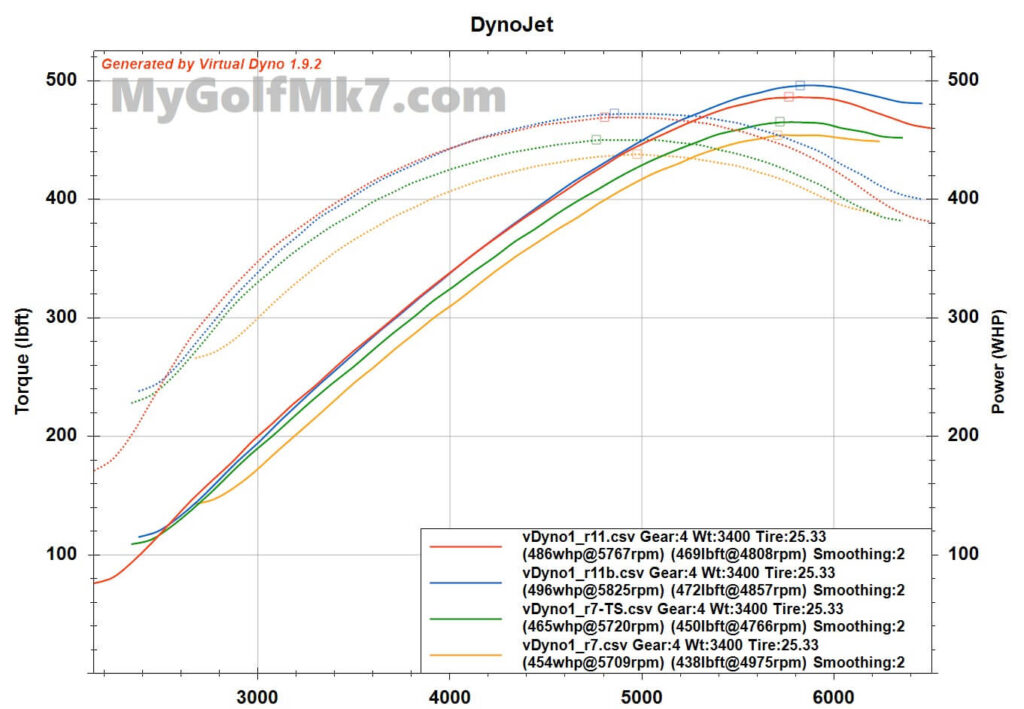
Note: 10 pulls were made with the catted downpipe with the ‘final’ boost pressure curve while refinement of ignition timing was made. There were 7 pulls made with the ‘final’ boost curve for the catless configuration. While the peak WHP gains are not supported with sufficient data to build confidence, the turbocharger wastegate duty cycle change has adequate supporting data.
Conclusions:
Replacing an aftermarket catted downpipe with a catless downpipe led to a 10% decrease in turbocharger wastegate duty cycle when using a Mabotech M520 turbocharger.
After updating the ECU tune to utilize the additional power available from the turbocharger turbine and increasing the Ethanol percentage from 30% to 50%, the engine’s peak wheel horsepower increased by approximately 45.
References:
The following discussion is based on a similar test with an Audi B9 S4, in which input factors were not adequately accounted for, and insufficient data were analyzed.
